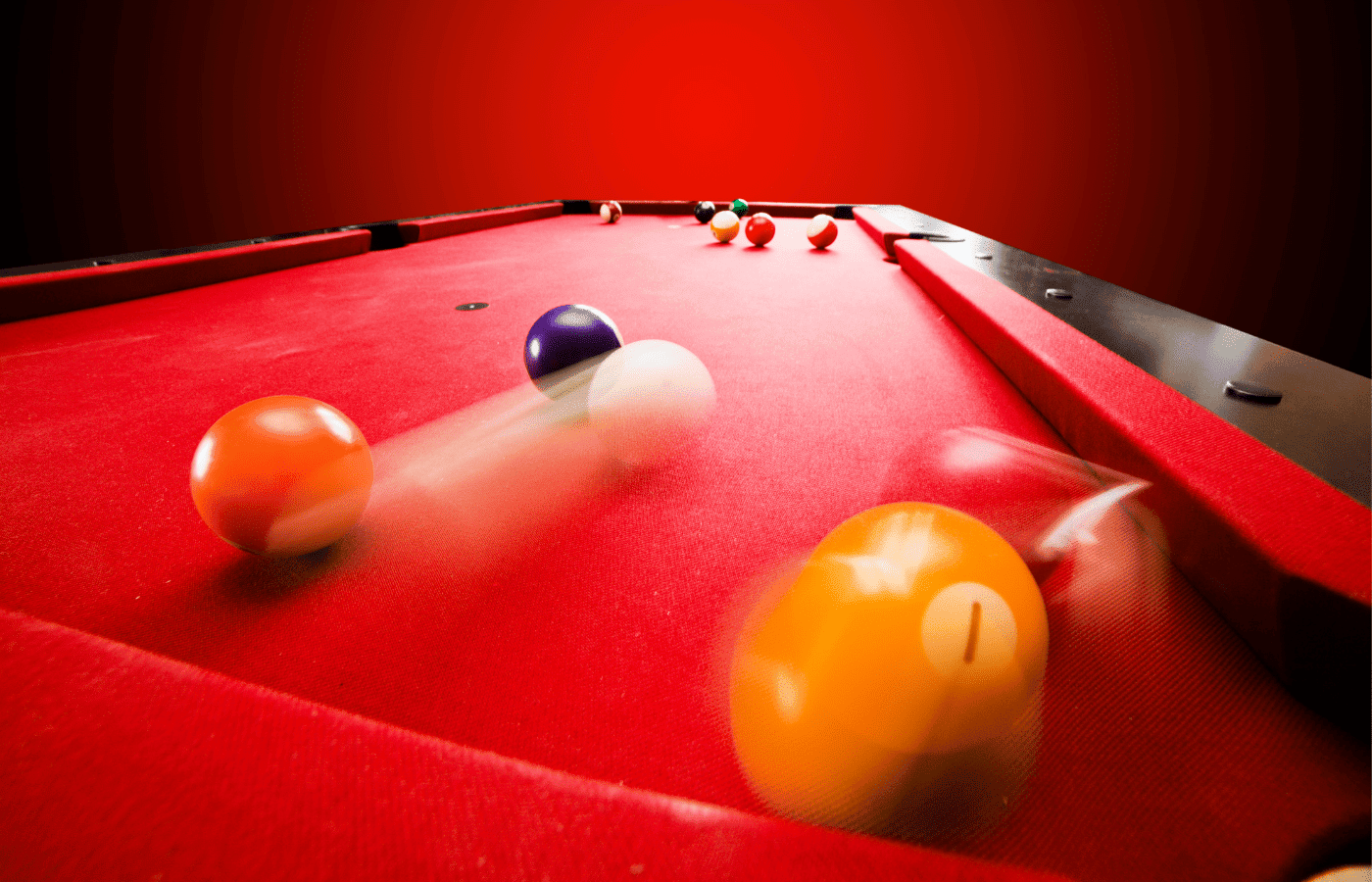Shooting billiards well is the epitome of cool. But just like with any skill, it’s hard to be good at pool if you don’t have easy access to a table that you can consistently practice on. Unlike games like foosball or pinball, billiards is secretly one of the nerdiest games you can find in your local game room.
Balls bounce off of each other due to conservation of kinetic energy. You can predict how a ball will bounce off the rails via the angles of incidence and reflection. Additionally, you can predict the angle at which a ball will travel by visualizing a protractor on the table.
If you understand these concepts and how they work together, you’ll understand how and why billiard balls bounce the way that they do. Once you learn how they bounce, you’ll understand how to control them and use these concepts to impress your friends.
How Can I Improve My Pool Angle?
You will never be able to shoot a good game of pool if you do not understand how, why, and where balls bounce the way that they do. There is a website devoted to real life applications of physics that features helpful diagrams and equations to help you understand all of this.
To understand where the balls are going to go when they bounce off each other, you have to look at where you expect the balls to strike each other. This spot is called the “point of contact”. Now imagine a line that runs through the point of contact and the centers of the balls that are striking each other.
Following this line will give you the direction that Ball B is going to travel in. How far it travels along this line depends on how hard you strike it with Ball A.
Once you have figured out where Ball B is going to go, you know where Ball A will go. Ball A is going to travel away from the point of contact in a line perpendicular to the one that Ball B is traveling in.
Did you know a good quality pool ball set can last up to 5x longer than the average set of balls? Aramith pool balls like these, are made out of the highest quality phenolic resin which provide exceptional scratch and impact resistance.
Head On Collisions
You will notice that the above only applies when Ball A strikes Ball B at an angle or to the side. When Ball A strikes Ball B head-on, things are different. Ball A stops moving and Ball B travels in a straight line from the point of contact.
Why are things different with head-on collisions? According to Real-World-Physics-Problems.com, when you strike the balls at a 90-degree angle, “this essentially means that the velocity of Ball A is completely transferred to Ball B.”
It makes sense when you think about it. If you strike the balls at an angle, the path of Ball A is being altered by bouncing off Ball B. But when you strike the balls head on, there is no force to adjust the course of Ball A.
There is nowhere else for Ball A to go, but because of conservation of kinetic energy, the ball’s momentum must go somewhere. So, it is transferred to Ball B. This is why these direct shots are some of the easiest to make in pool, you already know where the ball is going to travel without figuring it out.
Are Your Balls Bouncing Off the Rails?
Now you know where the balls will travel when they strike each other, but what if you can’t easily line your shots up to strike a ball or sink one into a hole? The sides of the pool table don’t just outline your playing area, they are also a helpful tool to help you bank your shots.
Banking shots might look tricky at first, but you probably know how to pull this off without realizing it. Think about physics class again. Do you remember the Angle of Incidence and the Angle of Reflection?
The angle of incidence is the angle at which the ball strikes the wall of the table, and the angle of reflection is the angle at which the ball bounces off. These terms are normally applied to rays of light bouncing off of objects, but they also apply to billiards.
So, if you are banking a shot, simply find a spot on the bank that is equidistant between the ball you’re shooting and your target (either another ball or a pocket). The ball will bounce off of the bank at the same angle it hit it, and then it will hit your target.
Aiming and Angling Your Shots
Just about everybody who struggles with pool will agree that aiming is the hardest part of the game for them. If you do not have a perfect shot lined up where you can nail the ball into the pocket, it can be hard to know where to strike.
Without bringing a protractor and marking up the table (most pool halls frown upon this), it’s hard to know exactly what angle you’re striking the balls at. But you don’t need to know exactly what angle you’re striking them at.
You can imagine a protractor laying on the table and use these imaginary lines to plan your shots. A vertical line from where you strike is a 90-degree angle and a horizontal line is a zero-degree angle. Halfway between these is 45 degrees. Keep halving these lines to estimate the angle you’re striking at.
Final Thoughts
One of the coolest things about billiards is that it’s a game that can be won almost entirely through math and physics. By understanding just a few basic physics concepts and how they work together, you can understand why and how pool bounce the way they do. This lets you improve your game quickly and easily.
Improving your skill at pool is largely a matter of understanding kinetic energy, elasticity, conservation of energy, the angle of incidence, and the angle of reflection.
By grasping these core concepts, you will be able to drastically improve your skill at pool, even if you don’t have easy access to a pool table to practice on. Now you can use this knowledge to impress all your friends next time you’re out at a table.


